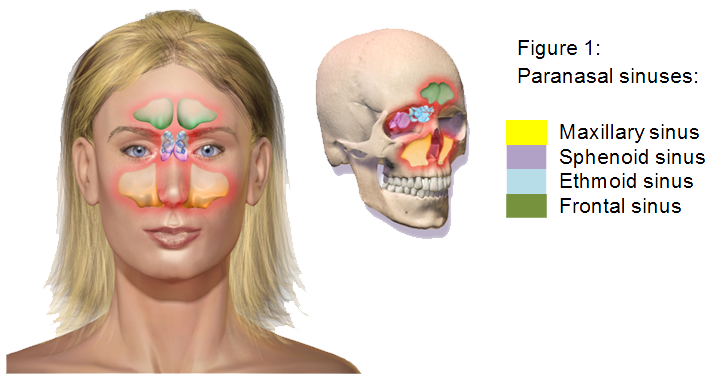Introduction
The paranasal sinuses are air filled spaces behind cheekbones and forehead that includes the maxillary, frontal, ethmoid, and sphenoid sinuses. These spaces surround the nose and are close to the eyes and lining of the brain.
Sinusitis is the inflammation of the sinus lining that covers the paranasal sinuses. Primarily, the cause of sinusitis is considered to be of nasal or sinus origin but in 10% to 12% cases it could be of dental origin.
Why oro-dental problem would lead to sinusitis?
The close relationship of the upper posterior teeth allows the possibility direct spread of dental infections into the maxillary sinus.
Sinusitis occurs due to the spread of infection into the sinus by violation of the lining of the sinuses (Schneiderian membrane). The infection could be caused by:
- Decayed tooth.
- Gum disease.
- Trauma.
- Dental implant placement.
- Complications of oral/dental surgery eg: sinus perforations during tooth extraction dental extraction, root canal treatment, root displaced in the sinus.
- Pathologic lesions of the upper jaw e.g: infected cystic lesions, antroliths, oroantral fistula.
- Complications of medication e.g: bisphosphonate-related asteonecrosis of jaw.
What are the symptoms of sinusitis of oro-dental origin?
- One-sided (unilateral) runny nose.
- Nasal obstruction (mainly unilateral).
- Offensive smell from the nose or mouth.
- Unilateral facial pain.
- Swelling at upper gum.
- Post-nasal dripping.
- Pain in the region of upper teeth.
- Fever.
How is sinusitis of oro-dental origin diagnosed?
Diagnosis of sinusitis of oro-dental origin requires a thorough clinical oral examination. Most of the time, radiographic elevation is needed.
The tooth most frequently related to sinusitis is the upper first molar, followed by the upper second molar and upper second premolar.
What are the treatments for sinusitis of oro-dental origin?
Management of sinusitis of oro-dental origin often requires medical treatment with appropriate antibiotics, surgical drainage when indicated, and treatment to remove the offending oro-dental problem.
Are there any complications from sinusitis?
Due to the proximity of the surrounding structures to the sinuses, sinusitis could lead to
- Meningitis
- The infection of the sinus spreads to the membrane covering the brain
- Vision problems
- The close proximity of the eyes and the sinus permits the infection to the eyes. This might lead to blurring of vision and blindness in severe cases
- Blood clots
- Infection to the veins surround the sinuses could lead to cavernous sinus thrombosis which is a life threatening condition.
- Cellulitis
- Spreading bacterial infection of the facial skin.
Summary
A dental evaluation should be considered in sinusitis cases with a history of dental pain or recent oral surgery and those with extended unilateral sinusitis or unilateral sinusitis resistant to conventional treatment.
References
- Farrukh, M. S., Udaipurwala, I. H., Ansari, M. A,. Muhammad Khayani, I. A., Farooq, M. U. (2013). Causes, Clinical Manisfestations and Treatment Outcome of Maxillary Sinusitis of Dental Origin. Pakistan Journal of Otolaryngology, 29, 84-86.
- Maurer, P., Sandulescu, T., Rashad, A., Hollstein, S., Stricker, F., Hölzle F., Kunkel, M. (2011) Bisphosphonate-related Osteonecrosis of the Maxilla ans Sinusitis Maxillaris, 40: 285-291.
- Mehra, P., Jeong, D. (2009) Maxillary Sinusitis of Odontogenic Origin. Current Allergy and Asthma Reports, 9, 238-243.
| Last Reviewed | : | 11 August 2016 |
| Writer | : | Dr. Lee Sie Wei |
| Accreditor | : | Dr. Shah Kamal Khan bin Jamal Din |








